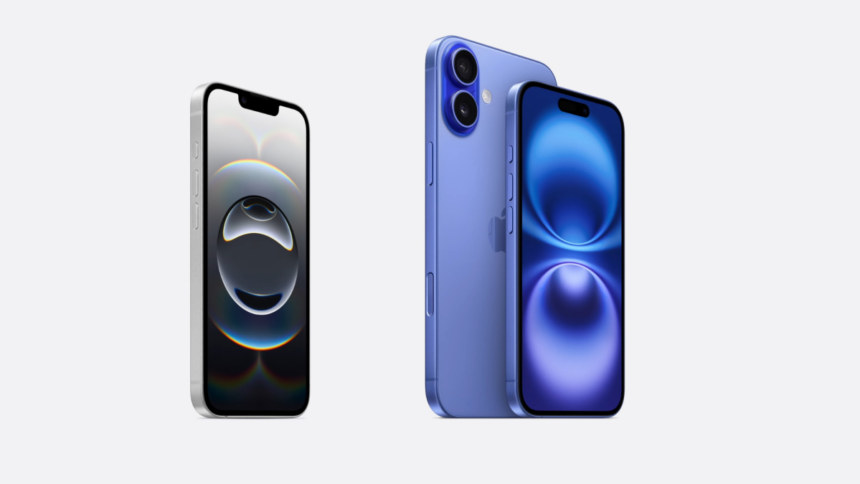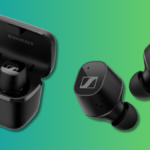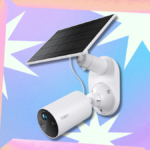Apple Unveils the iPhone 16e: Should You Choose This New Budget Option?
This Wednesday, Apple announced the latest addition to its budget iPhone series. Not to be confused with the anticipated iPhone SE 4, the newly launched product is the iPhone 16e. This marks the return of a letter designation in Apple’s iPhone range (reminiscent of models like the iPhone 6S or iPhone 5c), prompting a crucial question: Is the iPhone 16 or iPhone 16e the better buy?
In summary, the iPhone 16e shares striking similarities with the iPhone 16. For many users, this model is likely the best option due to its affordability and ability to deliver key features synonymous with the iPhone/iOS experience. Nonetheless, Apple made several trade-offs to offer this device at a lower price, and while most purchasers might not find these compromises significant, there are notable variations between the two models worth considering.
Display Features
Regardless of your choice of the iPhone 16 or iPhone 16e, you will enjoy a 6.1-inch “Super Retina XDR” display. This essentially translates to a vibrant and sharp OLED screen, identical in size on both devices.
However, there are important distinctions; although both models boast a 6.1-inch display, the brightness levels differ. The iPhone 16e typically achieves 800 nits and 1200 nits for HDR content, while the iPhone 16 can reach up to 1000 nits normally, and an impressive 1600 nits for HDR, even reaching 2000 nits in outdoor conditions. The resolution on the iPhone 16 is slightly superior at 2556 x 1179 compared to the 16e’s 2532 x 1170, although both displays maintain a pixel density of 460 ppi.
Another visible contrast lies in the design elements at the screen’s top. The iPhone 16 features Apple’s innovative Dynamic Island, which integrates the Face ID camera and various digital widgets for enhanced functionality. In contrast, the 16e opts for the more traditional notch, similar to the iPhone 14, missing out on the advantages offered by the Dynamic Island, especially concerning widgets and available screen space.
Performance Insights
Both models are powered by the A18 chip, Apple’s latest system-on-chip (SoC). In the 16e, this translates to a six-core CPU, a four-core GPU, and a 16-core Neural Engine. The iPhone 16, however, benefits from an additional GPU core, which may not make a noticeable difference in everyday tasks, but could enhance performance during demanding gaming sessions and improve longevity. Nonetheless, this is a minor enhancement and shouldn’t heavily influence your purchasing decision.
The A18 chip ensures the iPhone 16e supports Apple Intelligence, a feature absent in older models like the third-generation iPhone SE and even the iPhone 15. This can be a boon if AI functionalities pique your interest; but for those who prefer to disable such features, it may not hold significant value.
Camera Capabilities
Upon flipping both models around, a glaring difference becomes apparent: the iPhone 16e is equipped with just one camera, while the iPhone 16 sports a dual-camera setup.
The single lens on the 16e is comparable to the primary camera on the 16, featuring a 26mm 48MP “fusion” lens with an ƒ/1.6 aperture. While both cameras include optical image stabilization, the 16 has a more advanced “sensor-shift” stabilization, enhancing image stability. The 16 features “100% Focus Pixels,” meaning all pixels assist in focusing the image, whereas the 16e uses only a portion. Both cameras produce high-resolution shots in 24MP and 48MP formats and offer a 12MP “2x telephoto” zoom at 52mm.
Both models provide a host of features, including 10x digital zoom, night mode, and portrait mode. Although empirical specifications suggest comparable output from both cameras, the 16e loses the versatility of a 12MP ultra-wide lens, which can come in handy when framing larger subjects.
In terms of video capabilities, the iPhone 16 provides additional features like 4K Dolby Vision cinematic mode, 2.8K Dolby Vision Action mode, Spatial video recording, QuickTake video capture at 4K Dolby Vision (60 fps), and Macro video recording. However, both phones do support standard 4K Dolby Vision recording.
As for selfies, both models come with a 12MP front camera with an ƒ/1.9 aperture. While the 16 has enhanced Portrait mode controls and access to “latest generation” Photographic Styles, casual users will find minimal differences for regular selfies or FaceTime calls.
Cellular Technology and Battery Life
The iPhone 16e distinguishes itself as Apple’s inaugural phone equipped with a proprietary cellular modem known as C1, unlike previous models that utilized Qualcomm’s modems. While users may not perceive significant network gains with the new modem, it is said to enhance battery efficiency.
Apple claims the 16e offers the “best battery life ever on a 6.1-inch iPhone,” boasting up to 26 hours of video playback, 21 hours for streaming video, and 90 hours for audio playback. In comparison, the iPhone 16 achieves up to 22 hours of video playback, 18 hours of streaming, and 80 hours of audio playback. However, MagSafe charging is not compatible with the 16e, which may present inconvenience for users accustomed to Apple’s magnetic charging accessories.
Color Options
The iPhone 16e is available in a limited palette of just two colors: Black or White. The 16, in contrast, offers a variety of shades, including Black, White, Pink, Teal, and Ultramarine (purple). While the selection is intriguing, most users tend to cover their devices with cases shortly after purchase, rendering color choice less significant.
Additional Features
Several smaller features remain consistent across both models, including USB-C ports, allowing users to abandon Lightning cables (except for those still utilizing Lightning accessories).
Both models are also rated IP68 for water and dust resistance, enabling them to withstand submersion in water up to six meters for 30 minutes.
Available storage options for both the 16 and 16e include 128GB, 256GB, and 512GB, with comparable sizes and weights: the iPhone 16e measures 5.78 x 2.82 x 0.31 inches and weighs 5.88 ounces, while the iPhone 16 is slightly larger at 5.81 x 2.82 x 0.31 inches and weighs six ounces.
Cost Comparison
When comparing the two, the iPhone 16 offers superior features, making it the more robust choice, albeit at a higher price. The starting tag for the iPhone 16 is set at $799, which, while cheaper than the premium iPhone 16 Pro at $999, remains a considerable investment.
On the other hand, the iPhone 16e comes in at a lower price point, starting at $599 for the 128GB model. For context, the previous iPhone SE 3 launched at $429, indicating a significant shift in what is considered a “budget” iPhone.
In today’s market, with costs on the rise, this is a critical factor to consider. The opportunity to pre-order the iPhone 16e at $600, potentially securing many features seen in the 16 model—if you can make do without the brighter display, Camera Control button, and ultra-wide camera—presents a $200 savings. Plus, the 16e’s superior battery longevity further adds to its value.
Pre-orders for the iPhone 16e commence on February 21, with general availability starting February 28.












